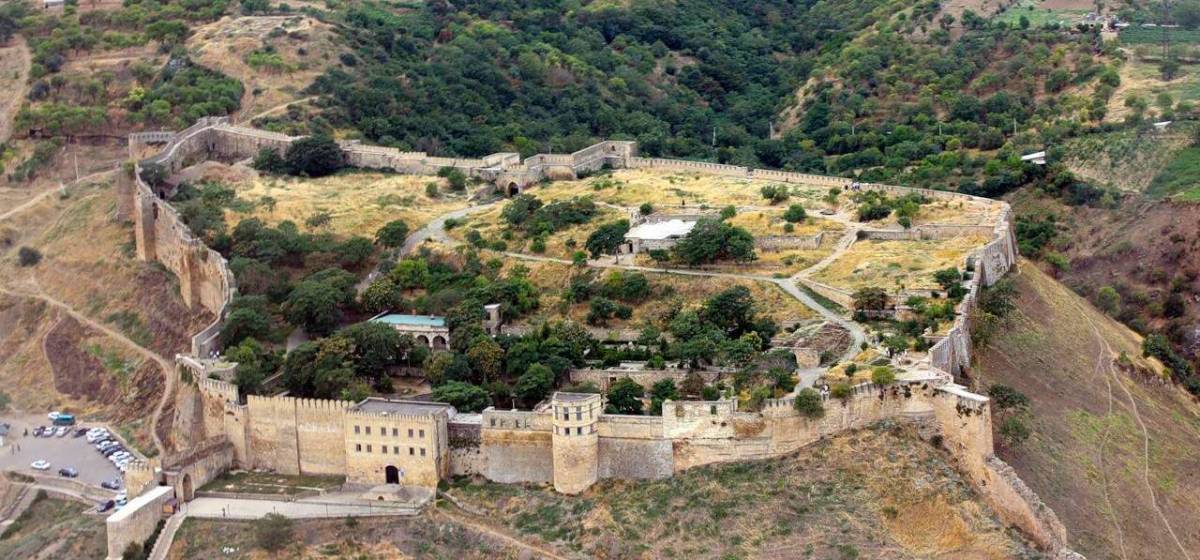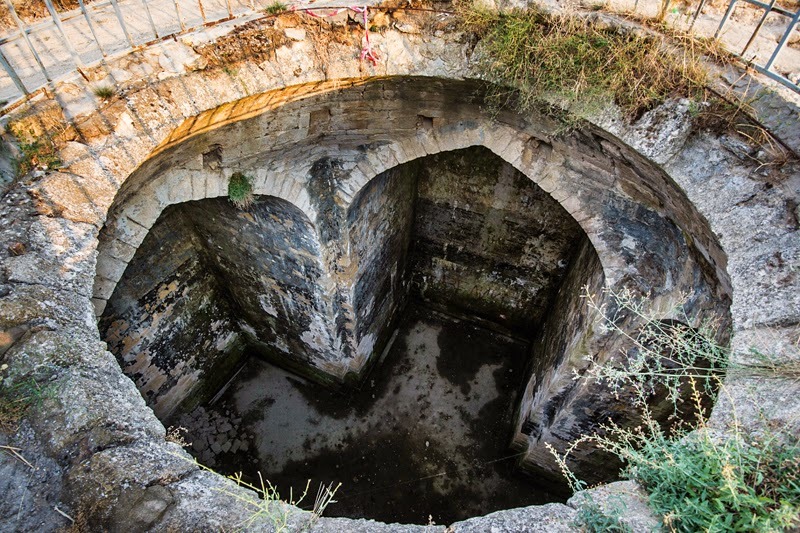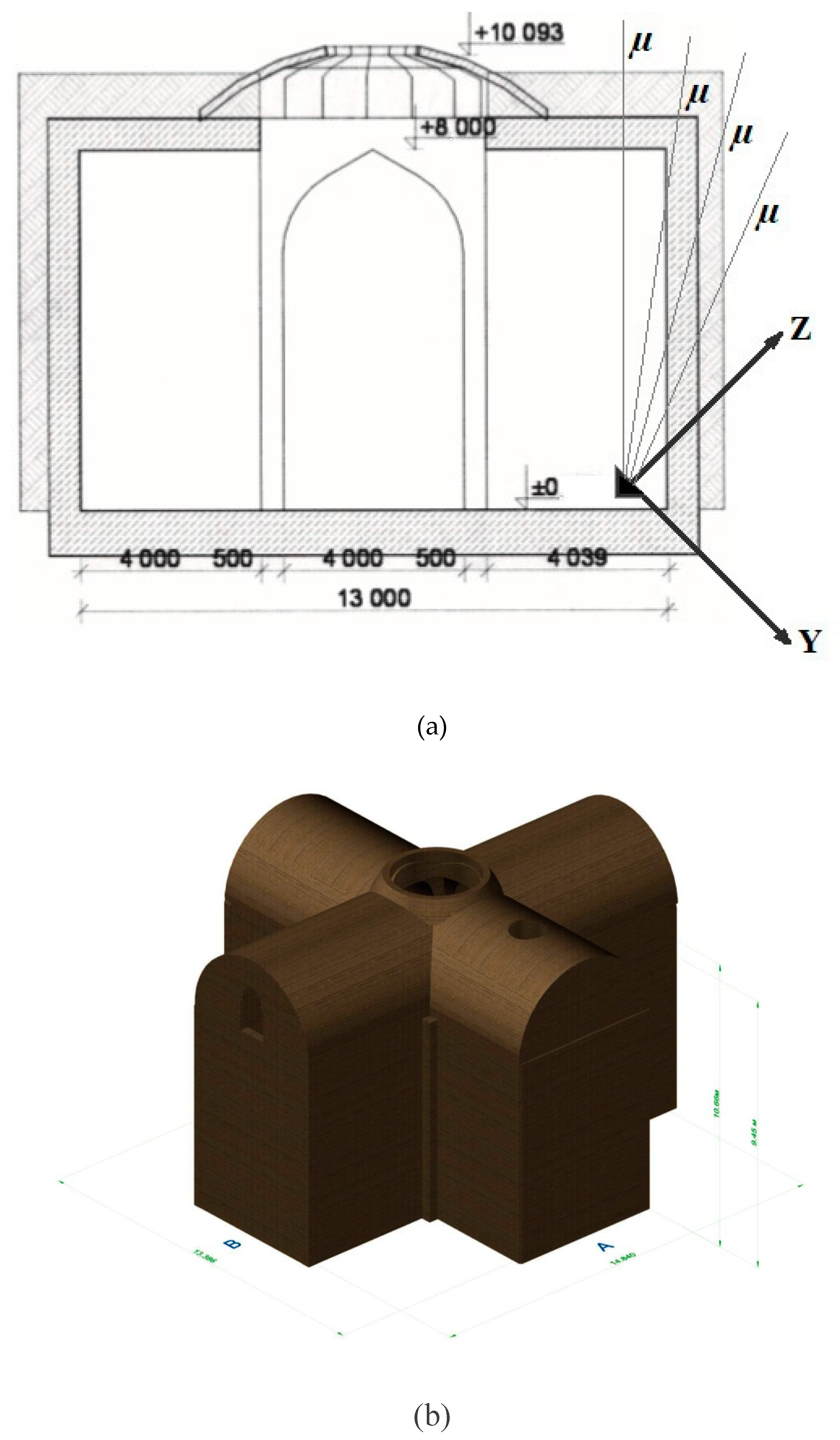The first 3D photos were taken, possibly the oldest Christian church in Russia
We already wrote on Habré about the "mystery of the buried temple." Today we can continue the conversation on this topic, thankfully, the scientists of NITU “MISiS”, in cooperation with representatives of other educational and academic structures, published the first results of a “scan” of the underground premises in the Derbent fortress of Naryn-Kala in Dagestan.
The preliminary conclusion of scientists - the hypothesis of archaeologists about the use of the building as a Christian church is the most likely. If this opinion is confirmed in the final conclusion, this building will be recognized as the oldest in Russia and one of the oldest Christian churches in the world, which the Arabs bombarded after the capture of Derbent in about 700 AD.
The 12-meter room is almost completely hidden under the ground, only a fragment of a half-destroyed dome is visible above the surface. This building in the northwestern part of the Naryn-Kala fortress in Derbent dates back to about 300 AD.
')

General view of the fortress Naryn-Kala
To date, the issue of the appointment of the building has not been resolved: a reservoir, a Christian temple, or a Zoroastrian fire temple. It is not possible for archaeologists to come to a consensus that the excavations of the temple, used for two centuries as a reservoir, can destroy a UNESCO cultural heritage site. Therefore, to study the premises, scientists used the method of muon radiography, placing several innovative detectors with a nuclear emulsion inside a buried room at a depth of 10 meters from the surface of the earth. Research lasted from May to September 2018, the first data obtained confirmed the effectiveness of the method for the study of this specific object.

View from above
The purpose of the experiment was to find out the possibility of studying the selected archaeological object using muon radiography, determine the optimal exposure, the number, size and location of the detectors, and obtain the first images of the object using nuclear emulsions. The results obtained from the muon detector made it possible to confirm the reality of the study of the building using muon radiography (which was not obvious given the similar density of soil around the building and walls of the limestone) and propose a plan for a full-scale experiment to identify the contours of the building as a whole.

3D-model of the underground room, obtained from the results of muon detection
In addition, already in the first test experiment, physicists "saw" an unusual distribution of muon fluxes in the western wing of the building, which may be related to the architectural features of the structure, indistinguishable by fragments of walls located on the surface of the earth. The construction, built of local limestone shell rock, is about 11 meters high and extends 15 meters from south to north and 13.4 meters from west to east. Segments (shoulders) of a cruciform design have a width of about 5 meters, three arms a length of about 4.2 m, and the fourth (northern) - more than 6 meters. The brackets are covered with vaults, and a dome wire frame with a diameter of 5 meters is located above the central part.

Sensors removed with the help of EMERCOM employees
In a number of historical and reference sources, this structure is referred to as an underground water tank, as it was in the XVII - XVIII centuries. However, the first experiment gave reason to doubt this hypothesis. The main reasons for the interpretation of this building, as the original religious building, were unusual for reservoirs, but characteristic of early churches and temples of fire, the cruciform shape of the building, as well as its orientation to the cardinal points.
“ It seems to me very strange to interpret this building as a water tank. In the same fortress of Naryn-Kala there is the same underground structure of 10 meters depth, and it really is a tank. This is just a rectangular building. The unusual building, in which we put our detectors, has the shape of a cross, oriented strictly along the cardinal points, one side is 2 meters more than the others. As the archaeologists say, who began excavations, this building during construction was entirely on the surface and it stands on the highest point of the Naryn-Kala. Put the tank on the surface, and even on the highest mountain? This is strange. So far there are more questions than answers , ”says the head of the scientific group, doctor of physical and mathematical sciences. Sciences, leading expert NITU "MISiS" Natalia Polukhina .

As the authors of the study emphasize, the characteristics of the probing radiation at this object require the subsequent irradiation of muon detectors in the area under study, and therefore, the continuation of experiments. According to scientists, it is especially effective to install detectors on the western slope of the fortress from the outside of the walls of the building in order to get its full-sized underground image. The main result of the next stage of the experiments will be the final three-dimensional tomogram of the underground structure, which will help determine the purpose of this unusual design.
The preliminary conclusion of scientists - the hypothesis of archaeologists about the use of the building as a Christian church is the most likely. If this opinion is confirmed in the final conclusion, this building will be recognized as the oldest in Russia and one of the oldest Christian churches in the world, which the Arabs bombarded after the capture of Derbent in about 700 AD.
The 12-meter room is almost completely hidden under the ground, only a fragment of a half-destroyed dome is visible above the surface. This building in the northwestern part of the Naryn-Kala fortress in Derbent dates back to about 300 AD.
')

General view of the fortress Naryn-Kala
To date, the issue of the appointment of the building has not been resolved: a reservoir, a Christian temple, or a Zoroastrian fire temple. It is not possible for archaeologists to come to a consensus that the excavations of the temple, used for two centuries as a reservoir, can destroy a UNESCO cultural heritage site. Therefore, to study the premises, scientists used the method of muon radiography, placing several innovative detectors with a nuclear emulsion inside a buried room at a depth of 10 meters from the surface of the earth. Research lasted from May to September 2018, the first data obtained confirmed the effectiveness of the method for the study of this specific object.

View from above
The purpose of the experiment was to find out the possibility of studying the selected archaeological object using muon radiography, determine the optimal exposure, the number, size and location of the detectors, and obtain the first images of the object using nuclear emulsions. The results obtained from the muon detector made it possible to confirm the reality of the study of the building using muon radiography (which was not obvious given the similar density of soil around the building and walls of the limestone) and propose a plan for a full-scale experiment to identify the contours of the building as a whole.

3D-model of the underground room, obtained from the results of muon detection
In addition, already in the first test experiment, physicists "saw" an unusual distribution of muon fluxes in the western wing of the building, which may be related to the architectural features of the structure, indistinguishable by fragments of walls located on the surface of the earth. The construction, built of local limestone shell rock, is about 11 meters high and extends 15 meters from south to north and 13.4 meters from west to east. Segments (shoulders) of a cruciform design have a width of about 5 meters, three arms a length of about 4.2 m, and the fourth (northern) - more than 6 meters. The brackets are covered with vaults, and a dome wire frame with a diameter of 5 meters is located above the central part.

Sensors removed with the help of EMERCOM employees
In a number of historical and reference sources, this structure is referred to as an underground water tank, as it was in the XVII - XVIII centuries. However, the first experiment gave reason to doubt this hypothesis. The main reasons for the interpretation of this building, as the original religious building, were unusual for reservoirs, but characteristic of early churches and temples of fire, the cruciform shape of the building, as well as its orientation to the cardinal points.
“ It seems to me very strange to interpret this building as a water tank. In the same fortress of Naryn-Kala there is the same underground structure of 10 meters depth, and it really is a tank. This is just a rectangular building. The unusual building, in which we put our detectors, has the shape of a cross, oriented strictly along the cardinal points, one side is 2 meters more than the others. As the archaeologists say, who began excavations, this building during construction was entirely on the surface and it stands on the highest point of the Naryn-Kala. Put the tank on the surface, and even on the highest mountain? This is strange. So far there are more questions than answers , ”says the head of the scientific group, doctor of physical and mathematical sciences. Sciences, leading expert NITU "MISiS" Natalia Polukhina .

As the authors of the study emphasize, the characteristics of the probing radiation at this object require the subsequent irradiation of muon detectors in the area under study, and therefore, the continuation of experiments. According to scientists, it is especially effective to install detectors on the western slope of the fortress from the outside of the walls of the building in order to get its full-sized underground image. The main result of the next stage of the experiments will be the final three-dimensional tomogram of the underground structure, which will help determine the purpose of this unusual design.
Source: https://habr.com/ru/post/458568/
All Articles